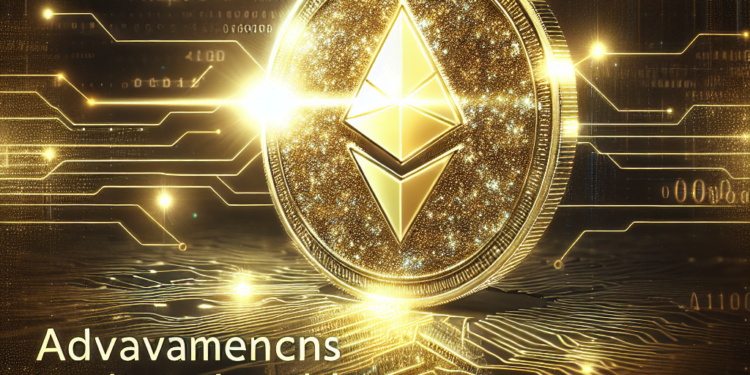In the digital age, cryptocurrencies have emerged as a novel means of trade, investment, and storage of value. Bitcoin, the first and most valuable of these currencies, has widely been termed ‘Digital Gold’ due to its decentralized nature and finite supply. However, in recent years, another player has garnered interest as the new ‘digital gold’: Cardano.
Developed by Ethereum co-founder Charles Hoskinson, Cardano aims to overcome the limitations of previous blockchains by implementing a research-first driven approach and peer-reviewed designs. In this article, we delve into the groundbreaking advancements Cardano is bringing into the Crypto world.
Understanding Cardano
Launched in 2017, Cardano is more than just a cryptocurrency. It’s a technological platform capable of running financial applications, smart contracts, and decentralized applications (DApps). However, what significantly sets Cardano apart from other blockchains is its philosophy of a balanced, sustainable ecosystem that combines pioneering technology with a focus on decentralization, security, and scalability.
The Science of Cardano
Unlike other blockchain projects, the entire Cardano project is built from scientific philosophy, with a significant portion of its development based on academic research. Cardano’s development team includes expert engineers and researchers from around the globe, who have published over 90 papers on blockchain technology across various fields. This scientific approach has equipped Cardano with the foundation to deliver more secure, scalable and efficient systems.
Proof of Stake (PoS) mechanism
Cardano uses a unique proof-of-stake protocol called Ouroboros, a mathematically verified secure blockchain protocol. The PoS mechanism helps reduce energy consumption compared to proof-of-work protocols like Bitcoin, thus making transactions more efficient.
Layered Architecture
Most of the existing blockchains have a single layer where transactions and states are mixed. Cardano offers a unique architecture of two layers: the Cardano Settlement Layer (CSL) handles the cryptocurrency ADA transactions, and the Cardano Computation Layer (CCL) handles smart contract logic. This separation allows for more flexibility, security, and increased capacity for complex transactions.
Interoperability and sustainability
Cardano Blockchain is striving to solve the ‘interoperability problem’ through the creation of sidechains. This allows transactions across different blockchain platforms. Moreover, Cardano is setting up a self-sustainable system through a treasury model, where a portion of transaction fees is used to fund future developments, maintaining the network’s ongoing health and evolution.
Future of Cardano
With its unique approach and striking features, Cardano seems poised for success. Cardano’s roadmap named ‘Goguen’ aims to improve the capabilities of Cardano by integrating a multi-currency ledger, decentralized identifiers, and building DApps on the Cardano platform. The Cardano team is working tirelessly towards achieving these goals, waiting to see a future where Cardano becomes a leading platform for executing smart contracts.
Investing in digital currencies has become the ‘new normal’ and, indeed, the ‘new gold’. The core focus on innovation, coupled with sustainability and security, makes Cardano an exciting prospect in the world of cryptocurrencies. Whether it may or may not replace ‘Bitcoin’, it’s worth paying attention to this unique and promising project. For more trending news articles like this, follow us on DeFi Daily News.
1. What is Cardano?
Cardano is a blockchain platform for smart contracts. Its native cryptocurrency ADA can be used to send and receive digital funds.
2. How is Cardano different from Bitcoin?
While Bitcoin is primarily a digital currency, Cardano offers more uses including the running of Decentralized Apps and smart contracts.
3. What is the concept of the Proof of Stake in Cardano?
Cardano uses a unique Proof of Stake protocol called Ouroboros. It ensures greater security and consumes less energy compared to Bitcoin’s Proof of Work.
4. Is Cardano sustainable?
Cardano plans to maintain its sustainability through a treasury model, where a small part of transaction fees will be used to fund future project developments.



















